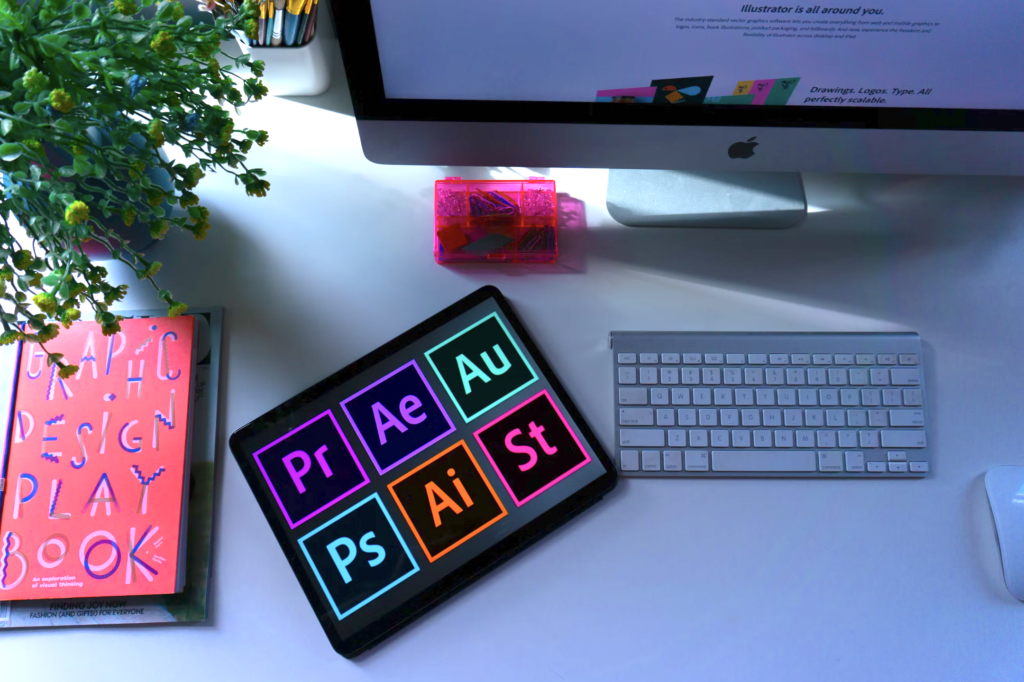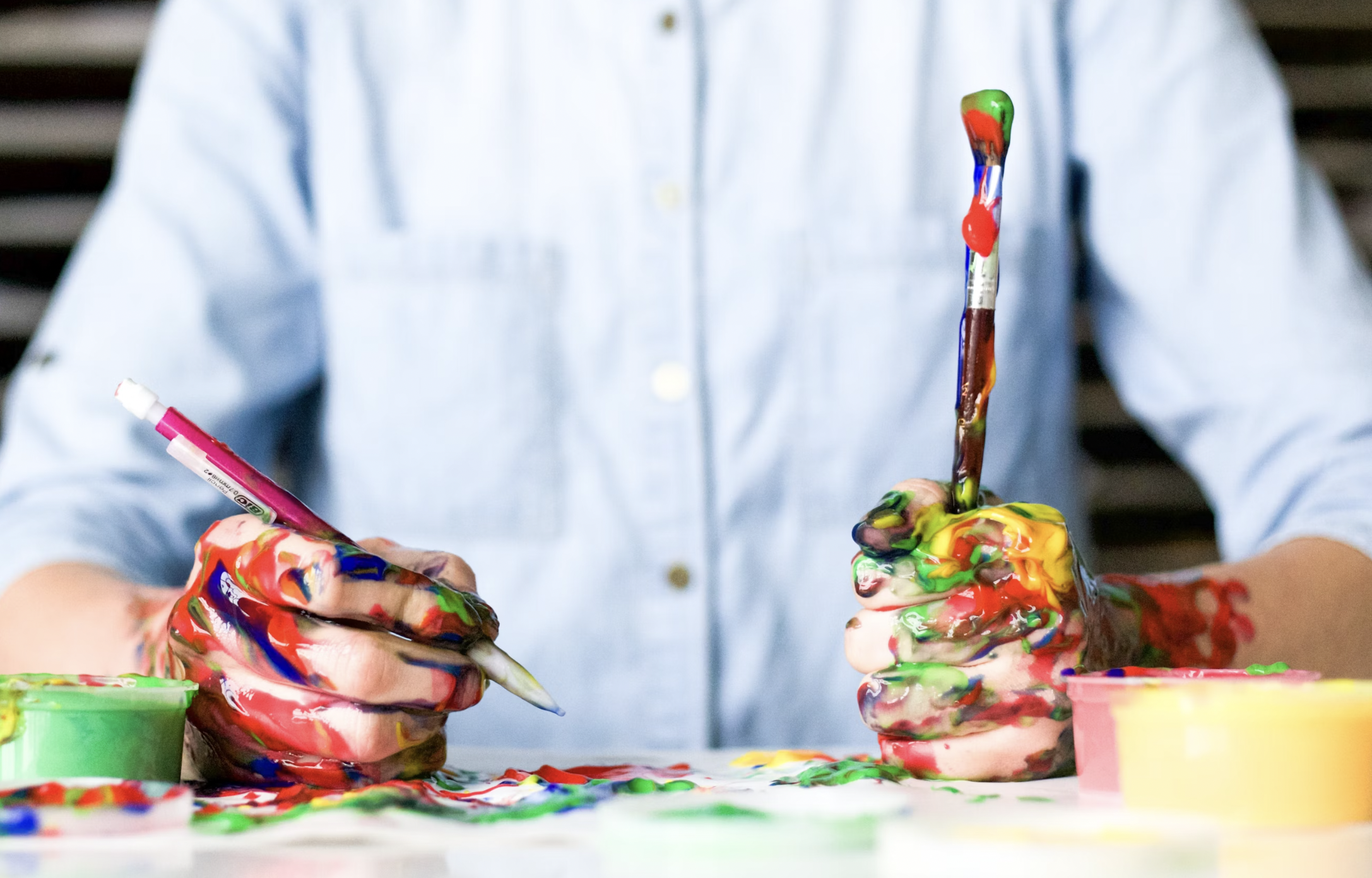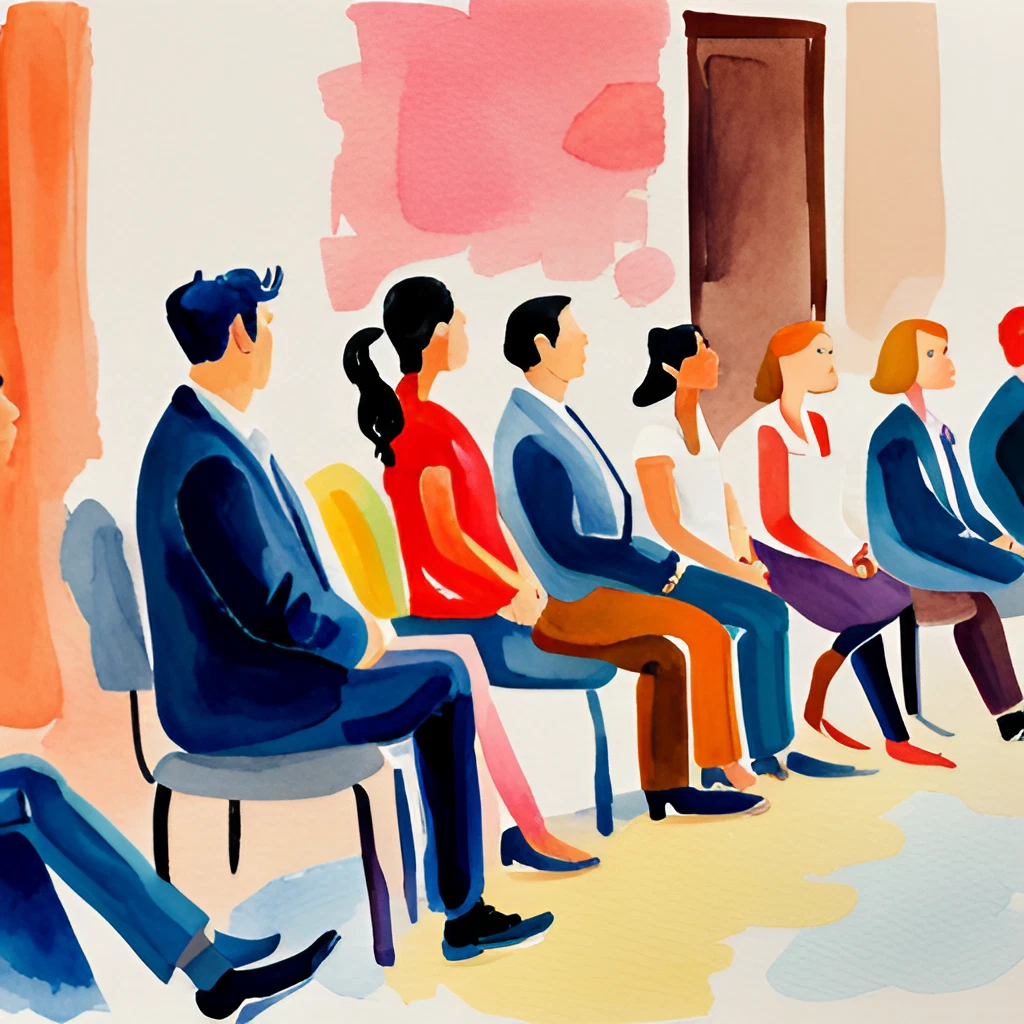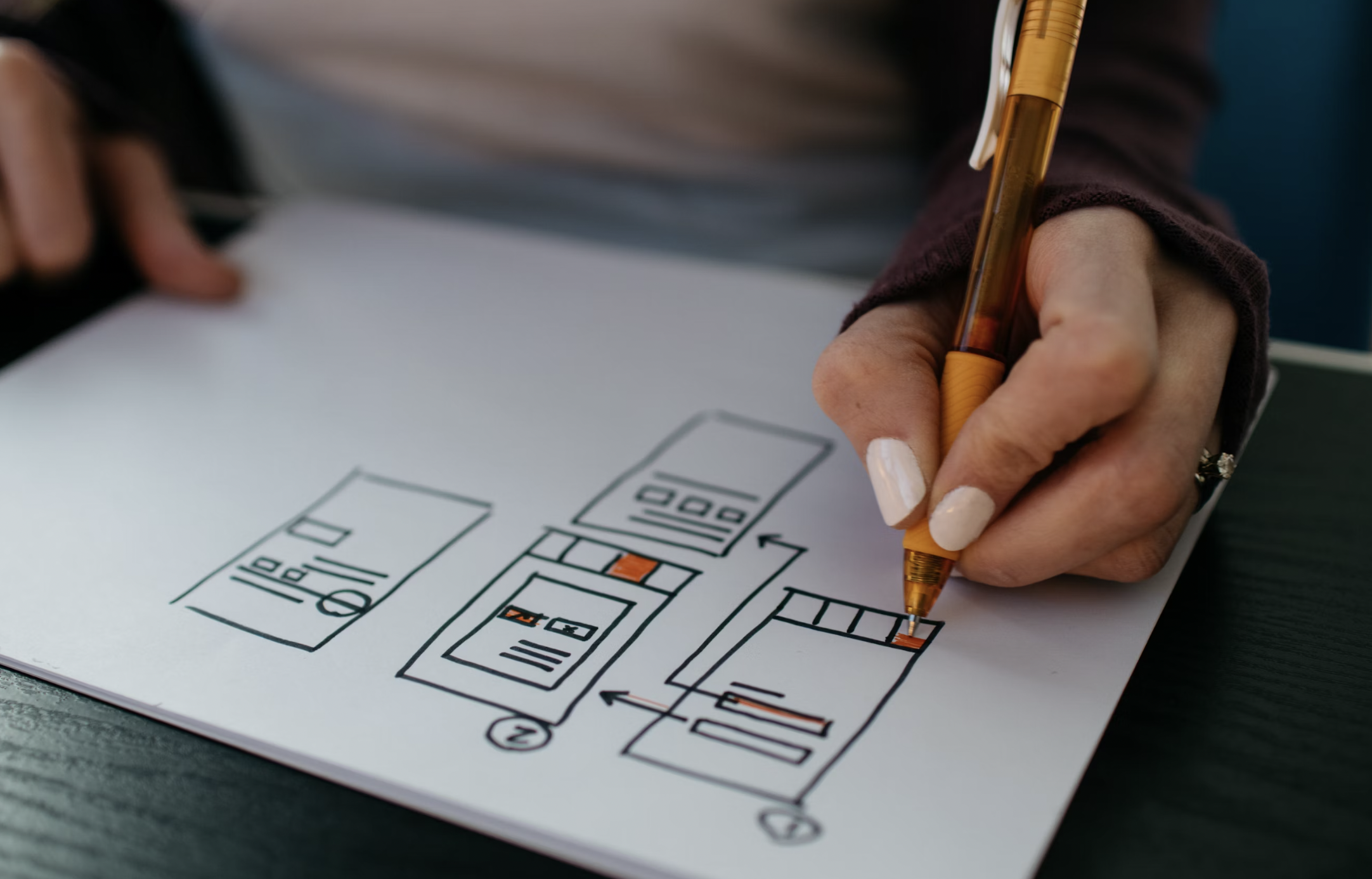Design is everywhere.
Like it or not, every part of our modern life is designed and curated.
Big social media apps like Instagram, Facebook, and YouTube are excellent examples of the power of design at work. Open the app and you’ll be scrolling for hours.
That’s not all.
From websites you visit for entertainment or business, to physical things like newspapers, brochures, and even your billing statement, each one incorporates design elements to make you think, feel, or behave a certain way.
The font chosen, the colors used, where the images are placed and the type of image are all handpicked for a reason and purpose.
You might be thinking, “All well and good.” But what does this have to do with you as a marketer?
I can give you one big reason.
Without good design, your business or product won’t get noticed.
Competition is cutthroat. If you’re attempting to send a message through your design work, make an eye-popping campaign, or just want an intuitive app your customers will love to use, each part needs to be carefully designed.
And to create good design, you need great designers on your team.
The caveat though is that design roles have transformed throughout the years. Gone are the days when a single person handled everything.
It’s nuanced now and creative team members now perform specific roles. Instead of just being a “designer,” they often specialize as an illustrator, a graphic designer, or a UX/UI designer.
As a marketing executive, knowing the difference between these designer roles lets you better use your creative team’s skillset.
In this article, I’ll help you unlock what each design role – the graphic designer, UX/UI designer, and illustrator – entails and what they can do to help level up your marketing.
Ready to find out?
This is going to be a long one, but I promise, you’ll learn something.
——
What is a Graphic Designer?

Source: unsplash
Graphic designers are the visual communicators of the design world. Need your logo or marketing campaign to reach your audience? The graphic designer creates the visual content you can use to send out this message.
Using art and technology, they create visuals that resonate with customers and get the big idea out. Over time, a graphic designer’s role has expanded to include environmental, print, and digital design.
Important Skills Needed for Graphic Designers
Graphic designers need to have strong technical and soft skills. Among the technical skills, they need to have a solid grasp of the following:
- Good knowledge of design principles
- Solid understanding of color theory
- Great knowledge of layout design
- Extensive experience with using digital design software
- Excellent understanding of typography
- Versatile in both print and digital design assets
Another important quality for a graphic designer is the ability to communicate ideas. Design in a marketing setting is a collaborative effort between departments. Graphic designers need to be able to share their vision with clarity and ease. Marketing teams also count on them for their creativity, unique perspective, and problem-solving skills.
What Tools Do Graphic Designers Use?
Graphic design roles began thriving when digital tools became accessible. Graphic design work primarily uses digital software and programs to bring design work to life. Some of the most popular tools include Photoshop, InDesign, Illustrator, and Sketch.
Why You Need a Graphic Designer For Your Team
Good visual design doesn’t create itself.
Graphic designers play a key role in creating professional imagery. Appealing and professional design can improve customer trust, increase sales or engagement, and enhance brand recognition.
There are other advantages to having a graphic designer. One, you can create brand consistency in your marketing and advertising. Two, you can solidify your brand identity with specific visual elements unique to your brand. Three, you get to stand out from the competition. There’s someone who can help you create an identity in the wide world of business. They can even keep up with graphic design trends so the visuals for your brand are up to date with the current demands of the market.

Source: unsplash
What is an Illustrator?
Illustrators are visual artists who use their unique artistic abilities to create original artwork for a design project. Unlike a graphic designer, an illustrator can make art for specific campaigns, books, magazines, and digital or physical marketing materials. Illustrators often work with graphic designers, editors, marketing executives, creative directors, or authors to bring their vision to life.
Like most fields, illustrators can be further subdivided into different types. Illustrators usually have a distinct style or specialize in a particular field. Companies can hire a specific illustrator, depending on what they need.
For example, a children’s book publishing company may want a book illustrator who creates vibrant drawings that appeal to children of certain ages. On the other hand, technical illustrators specialize in interpreting complex technical information. They’re the ones who end up creating blueprints, schematic diagrams, or furniture and appliance manuals. Product packaging illustrators are yet another type of illustrator that focuses on designing attractive packaging to draw in customers.
As a business, it’s crucial to know what type of illustrator you need in your company.
Important Skills Needed for Illustrators
Good drawing and painting skills are a must for any illustrator. When working for a company or others, an illustrator’s main task is coming up with a visual representation of the message the brand or company wants to express.
Creativity is another important skill. Because illustrators often work in different industries, it’s also advantageous for them to be familiar with both traditional and digital mediums when creating their illustrations.
What Tools Do Illustrators Use?
Illustrators are artists. Depending on their expertise and preference, they can use any tool they are comfortable with unless a campaign or an industry calls for a particular software. Among the most common tools are Adobe Illustrator for vector work and Procreate for drawing, painting, and designing. Occasionally, Painter, or traditional mediums like watercolors, graphite, ink, and acrylic paints, are also pulled out of the toolbox. There are also industry-specific tools like AutoCAD.
Why You Need an Illustrator For Your Team
Marketing teams can benefit from an illustrator in a multitude of ways. If you’re a company that requires customized art regularly or for clients, for instance, your business produces coloring books or posters, then you would benefit from having an illustrator. The type of industry you are in will also be a factor in the kind of illustrator you will have on your team.
Having customized artwork for a marketing campaign or your product allows brands a chance to stand out in an extremely saturated market. This enables companies to create a design or campaign that resonates with customers on a deeper level. It’s like hiring for custom photos, good quality illustrations make something truly special.
Source: unsplash
What is a UX/UI Designer?
Unlike the graphic designer and illustrator, the role of the UX/UI designer is divided into two parts. UX means User Experience, which involves how a customer navigates and uses a product while the UI part, stands for User Interface and involves the layout or aesthetic design of a product.
It’s critical to remember that even though these two titles are often lumped together on job boards. They are two distinct practices. One company may only require an expert UI designer to deal with creating a beautiful-looking interface. Still, other companies might only need a UX designer to perform tasks like competitive analysis, wireframing, user interviews, etc., to create a functional and pleasant experience for the audience.
Although they’re often limited to the digital space, a UX/UI designer can work in various environments including marketing and advertising agencies. This kind of designer is essential in creating an intuitive and seamless digital experience for users. Companies that specialize in digital products, website design, mobile apps, or software can benefit from having someone skilled in this department.
Important Skills Needed for UX/UI Designers
The skills required for UX/UI designers are diverse. UX designers need to be experts in facilitating, executing, and analyzing research data. They should also have a good understanding of how a user behaves and how they think.
Meanwhile, a UI designer is expected to be an expert in aesthetic layout and presentation. Like a graphic designer, they need to be familiar with typography, color choices, and branding and how to use these elements to make customers enjoy the experience while navigating a user interface.
What Tools Do UX/UI Designers Use?
UX/UI designers use wireframing tools like Adobe Photoshop and Figma. Specific software can also be used depending on the work being done. Speaking of work, the most common for this type of designer includes wireframing, user research, interaction design, or prototyping.
Why You Need a UX/UI Designer For Your Team
A marketing agency or business often uses the skillset of a UX/UI designer in projects involving digital products. They can work on website design and mobile app interfaces or companies involved in creating interactive digital products that require developing for user experience and interface.
Digital marketing is often where you’ll find a UX/UI designer because their designs usually impact customer experience, sales, and conversion.
What is the Difference Between All Three Design Roles?
The Work Nature
Graphic designers create work focused mostly on static visuals, usually for marketing and branding purposes. If you need brand collateral, website design, or other related visual design tasks, a graphic designer is your go-to.
However, for custom artwork that communicates a specific story or message, the help of an illustrator is needed. Illustrators usually have distinct styles, which is great if you want to create consistent branding or a specific look. They can work on editorials, create website images, or add artwork to products. There are also different types of illustrators working in various fields so their specialization will be unique to the industry they are tied with.
Finally, UX/UI designers concentrate on digital products like websites, applications, and other interactive elements that require thought on user experience and user interface.
However, it’s worth remembering that UX/UI designers are not graphic designers, the same goes for illustrators. UX/UI designers often partner with a graphic designer and sometimes illustrators to complete the design aspect of an interface. It’s worth remembering that oftentimes, all three roles work in combination with each other.
Collaborating with Marketing Teams
Each designer can play different roles when working with a team. Graphic designers are often tied with the marketing team. They plan, strategize, and create together with the team so there’s consistency in the brand visuals.
Illustrators can sometimes work directly with the creative director if specific visuals are needed or if the illustrator is a freelancer. Sometimes, companies hire illustrators as contractors or put them on retainer.
UX/UI designers work with developers, graphic designers, and product managers, but they also have a crucial role in the marketing team. These designers need to understand the goal of the product and translate it into a pleasant user experience.
How To Hire The Right Talent for Your Marketing Team
Identifying What Your Team Needs
Now that you have a good idea of what these roles play, you can make a more informed decision when hiring. But before you give the go signal for recruitment, there’s one important thing to finalize first and that’s understanding the goals you plan to achieve with the designer’s help.
Remember, there’s a reason you’re hiring for a specific designer in your team. It’s either you don’t have one or need help with a particular project or creative marketing campaign. Once this is sorted out, you can start interviewing for the spot.

Tips for Hiring The Right Creative
Marketing executives can consider the following when hiring for any of these three roles:
Resume
You may want to jump directly into a portfolio review but I recommend starting with the resume. Take a thorough look at the applicant’s resume. Check out how many years they’ve been working in the field, who they used to work for, and what tasks they performed.
This can give you an overview of whether they will fit into your environment or handle the tasks you have in mind. It’s also a great idea to note the titles they use and the responsibilities they outline.
Portfolio
Most applicants will prepare portfolio pieces to showcase their experience. Marketing executives can look for similar projects or designs the applicant has done that are in line with the type of project they want to achieve.
It’s also important to look at the design of the portfolio itself.
If you’re hiring a graphic designer, ask yourself, “Does the portfolio reflect the quality you would like to see in your marketing campaigns or products?”
When hiring a UX/UI designer, you can expect their portfolio to look as impressive as their skills. While it may not be over the top or showcase everything the applicant can do, it should at least have a good design aesthetic, text visibility, color use, and placement of elements.
Portfolios are a must when it comes to the design field since they give potential employers a chance to gauge a designer’s skillset and capacity. The only exception would be NDA-covered work or designs. In such cases, a live portfolio showing can be requested if their resume truly stands out.
Full-Time or Freelance Role
Another point to consider when hiring for these designer roles is whether you’re looking for a full-time employee or just want someone in a freelancer or contractual role. Do consider the project timeline if you are going to decide on a part-time hire.
For those wanting a full-time employee, consider the overall fit to your work culture and company. It’s also worth noting your project needs as well as budget.
Budget
Knowing whether you’re looking for a full-time or part-time hire would help in nailing down a budget. Budgets can be for the entire project, monthly salary, or a retainer’s fee.
Fractional Creative Directors
Hiring a fractional creative director for all of your creative marketing needs is another fantastic option. Busy marketing executives without much time to handle the creative part of their marketing can lean on the fractional creative director to ease the workload or manage specific campaigns they don’t have time to focus on.
Since they are part-time hires, there’s no long-term commitment. Part-time creative directors can deal with all of the creative aspects of your marketing including overseeing a campaign or project, providing team guidance, and performing the recruitment process of new designers.
Cost-Benefit of Hiring
I’ve mentioned budget before, but as a company, it is also crucial to consider the cost-benefit of hiring for a specific design role. If the goal is to make your job easier and your marketing campaigns a success, investing in a dedicated graphic designer, illustrator or UX/UI designer might be worth it.
The initial cost of hiring might be higher than you want but if having a professional on your team offers ample benefits including high-quality work, great customer response, and fantastic sales, then it should be worth the expense.
Wrapping Up
To succeed in today’s digital era, marketing executives must make an effort to adapt and adopt.
By having a complete understanding of what graphic designers do and how they differ from the roles of illustrators or UX/UI designers, you are positioning yourself to better use the right talent to contribute to the success of your marketing efforts.
—-
Love the idea of creative design help but prefer to be hands-off so you can do your tasks as an executive without worry?
Working with a fractional creative director is the right choice for you. A fractional creative director can help handle complicated marketing campaigns, lead your creative team, hire the right designers for the role, and more.
Nicole Steffen Design is ready to take care of your creative marketing needs. Find out how we can make your executive life better, schedule a 30-minute call today.





